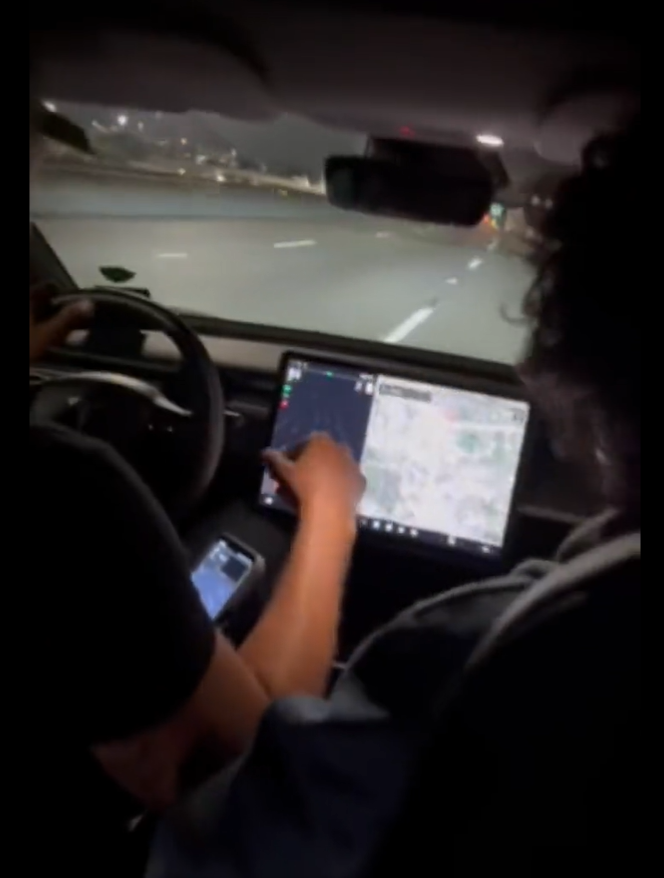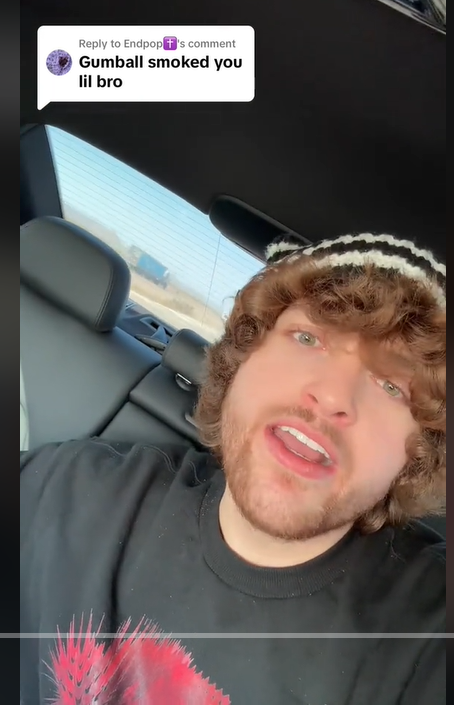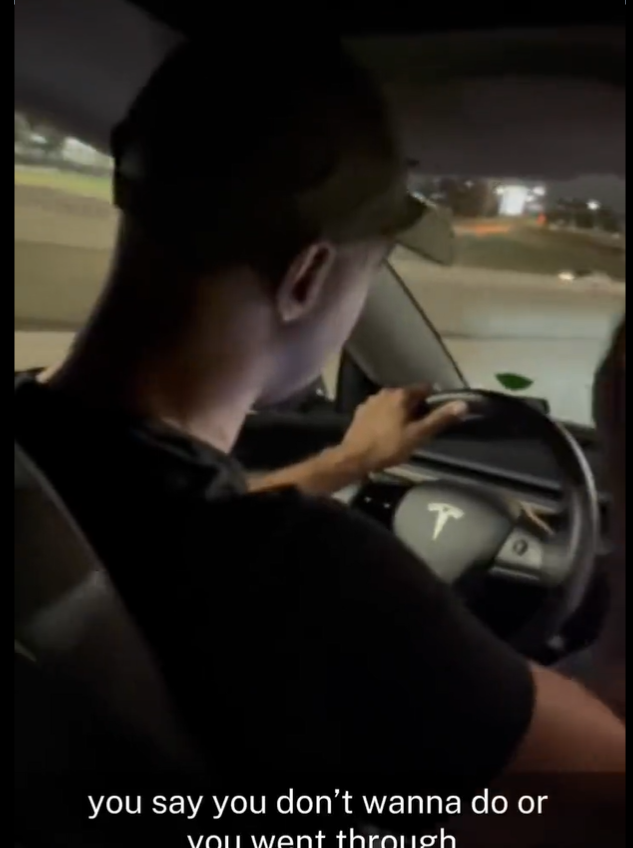In the dynamic landscape of online clashes, a recent and widely discussed feud between YouTuber Clay “Dream” and Nicolas Cantu, renowned as the voice behind Gumball Watterson, has taken center stage. The escalation of this conflict, initially sparked on Twitter and later intensified by the release of a revealing video, has sent shockwaves across social media platforms. This article aims to provide an in-depth exploration, unraveling the intricacies of the Gumball vs. Dream fight, examining the origins, the contentious video, social media fallout, and the ongoing aftermath.

1. The Twitter Clash and Allegations (October 16):
The genesis of the Gumball vs. Dream online feud traces back to October 16, when the clash erupted on the social media platform Twitter. Nicolas Cantu, renowned as the voice behind Gumball Watterson, directed criticism at Dream in response to a parody account, setting the stage for a series of contentious interactions.
The catalyst for this Twitter clash was the parody account, not affiliated with the famed YouTuber Dream. Nicolas Cantu, mistakenly attributing the content to Dream himself, launched a critique on October 16. In the midst of this exchange, Dream, swift to point out the misunderstanding, brought attention to Cantu’s failure to respond to a legitimate profile.
However, what began as a social media misunderstanding quickly escalated as Dream proceeded to make serious allegations against Cantu. These accusations included incidents that purportedly transpired at an event attended by both parties and during a shared Uber ride shortly thereafter. The details of these allegations, while not fully disclosed, hinted at a tumultuous encounter that added a layer of complexity to the ongoing online conflict.
Cantu, in response, admitted to a physical encounter labeled as a “slapbox” and acknowledged being rude to the Uber driver. Despite these admissions, Cantu chose not to offer an apology for his behavior, opting instead to double down on the claims made by Dream. This exchange marked the inception of a highly publicized and contentious online saga that would soon captivate social media audiences globally.
The Twitter clash and ensuing allegations set the stage for a deeper exploration into the Gumball vs. Dream feud, foreshadowing the release of a viral video that would further intensify the online conflict.
2. Dream’s Strategic Move: The Viral Video:
Following the heated Twitter clash and a barrage of serious allegations between Dream and Gumball voice actor Nicolas Cantu on October 16, the online feud took an unexpected turn with Dream’s strategic move – the release of a compelling and controversial viral video.

Dream’s Tactical Response:
Recognizing the power of visual evidence in the online arena, Dream opted to provide a nuanced and detailed account of the ongoing conflict. On an undisclosed date following the Twitter clash, Dream released a video that surpassed two minutes in duration. This video, carefully crafted to substantiate his claims, aimed to shed light on the events that transpired during the shared Uber ride and at the previously mentioned event.
Content of the Viral Video:
The video featured Nicolas Cantu, the voice behind Gumball Watterson, making a series of offensive statements. These revelations not only added weight to Dream’s earlier allegations but also fueled the already intense discussions across social media platforms. The strategic release of this video brought a visual dimension to the conflict, allowing viewers to witness firsthand the contentious exchange between the two personalities.
Social Media Eruption:
The impact of the viral video was immediate and profound. Social media platforms buzzed with discussions under the trending hashtag #DreamVsGumball, as users shared, commented, and reacted to the contents of the video. The strategic use of visual evidence transformed the online conflict, turning it into a multimedia spectacle that captured the attention of a global audience.

Double-Down: Cantu’s Response:
In the aftermath of the video’s release, Nicolas Cantu faced increased scrutiny. While Dream maintained relative silence on Twitter, Cantu took to the platform to post memes and retweet content related to the ongoing feud. Notably, Cantu’s response to the video was marked by unapologetic posts, choosing not to retract his previous statements and instead continuing to embrace the controversy.
Impact on the Online Feud:
Dream’s strategic move with the viral video altered the dynamics of the Gumball vs. Dream feud. It not only shifted the narrative in favor of Dream but also propelled the conflict into a new realm of online discussion, with audiences eagerly awaiting further developments.
The release of this viral video marked a pivotal moment in the ongoing saga, intensifying the already fervent debate surrounding the clash between Dream and Gumball’s Nicolas Cantu. As social media users continued to dissect the contents of the video, the online landscape braced itself for the next chapter in this gripping digital saga.

3. Social Media Fallout and Memes:
While Dream opted for relative silence on Twitter post-video release, Cantu embraced the online spotlight. He posted outrageous memes, retweeted content related to the feud, and even uploaded a peculiar YouTube video titled “Surf Compilation for Winners,” featuring seemingly unrelated surfing clips. A screenshot revealing Dream had blocked Cantu only intensified the social media fallout.
4. Aftermath and Internet Response:
As of November 20, Cantu has dialed back on tweeting about the situation, leaving the internet abuzz with discussions and memes dissecting the allegations made by both parties. Despite Dream’s retreat from the social media sparring, the online community remains engaged, anticipating whether Cantu will reignite the controversy in the days to come.
Nicolas Cantu, voice actor for Gumball, Dora, Teenage Mutant Ninja Turtles, Skull Island, and more,
being homophobic, antisemetic, ableist, and threatening to kill me, everyone: pic.twitter.com/huH3433xfN
— Dream (@Dream) November 18, 2023
5. The Complex Interplay of Online Personalities:
This saga serves as a microcosm of the intricate dynamics between online personalities and their audience. The Gumball vs. Dream feud highlights how conflicts can escalate across platforms, capturing the attention of a global audience and sparking intense discussions and reactions.
@dreamwastakenwastaken Replying to @Endpop✝️ ♬ original sound – Dream
Conclusion:
As the virtual dust settles, the Gumball vs. Dream fight continues to resonate within the digital realm. This deep dive aims to provide a comprehensive understanding of the viral online feud, showcasing the complexities of online conflicts and the enduring impact they have on the internet community. While the immediate aftermath unfolds, the lingering discussions and potential for a renewed clash linger, underscoring the perpetual drama that defines the online landscape.
